#Romanian Revival architecture
Explore tagged Tumblr posts
Text
I am huge lover of architecture, and one of my dream destinations to visit is Bucharest, Romania.
Romanian Revival architecture is, in my humble opinion, the best looking ever made. Just look at this--
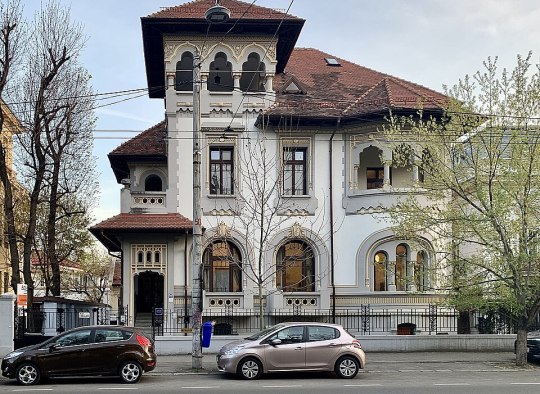

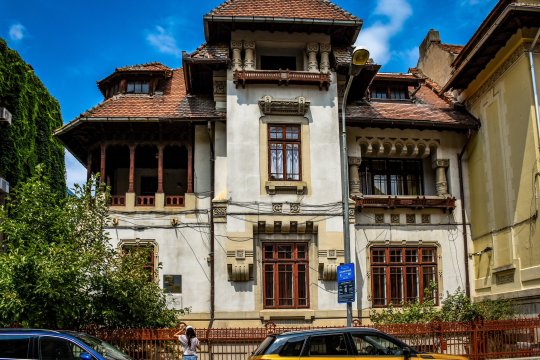

THIS IS WHAT I WANT MY HOUSE TO LOOK LIKE. If I ever win the lottery I am building a house like this. Alas, the closest I will get to is building it in the Sims 4.
2 notes
·
View notes
Text
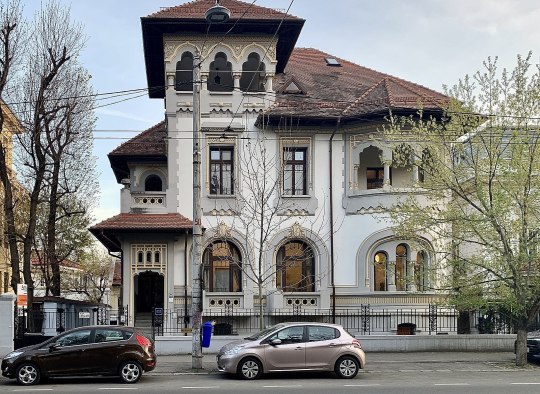
C.N. Câmpeanu House by Constantin Nănescu, in Bucharest, c.1923
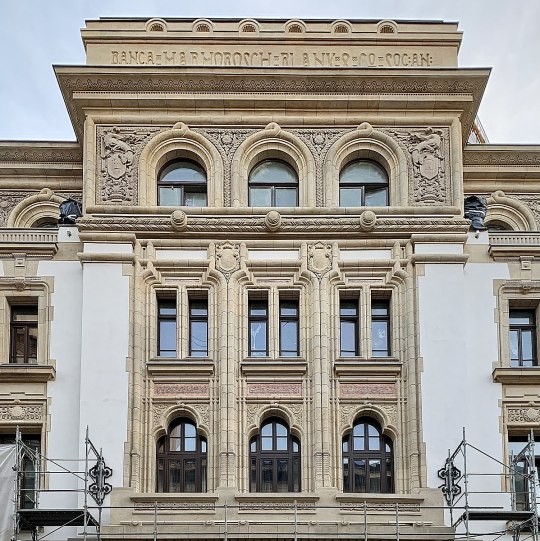
The Marmorosch Blank Bank Palace in Bucharest, 1915-1923
2 notes
·
View notes
Text

rauldumitruv
Peleş Castle: The First Castle in Europe With Central Heating and Electricity
A masterpiece of German neo-Renaissance and Gothic revival architectural style, Peleş Castle is located in Sinaia, Romania. By form, Peleş is a palace but it is called a castle. It was built by the first Romanian king, Carol I, as a summer retreat. Later, it served as a royal residence until 1947. It is known to be the favorite castle of Carol I, who oversaw all of the construction and design process. The construction began in 1883 and ended in 1914.

travelrobb

fla5

fla5

rouzisgiorgos
#rauldumitruv#photographer#peles castle#castle#europe#german neo-renaissance#gothic revival architectural style#sinaia#romania#architecture#history#culture#carol i#travelrobb#fla5#rouzisgiorgos#interior architecture
18 notes
·
View notes
Photo
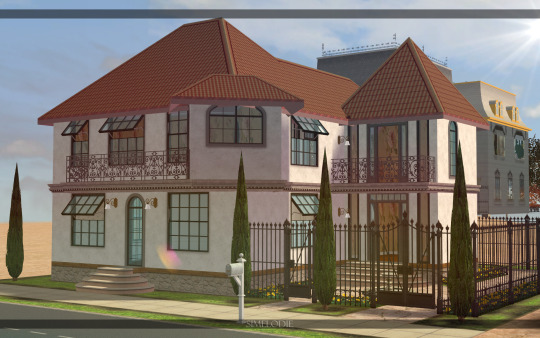
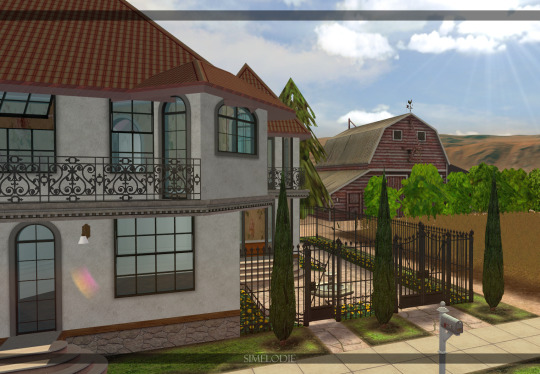



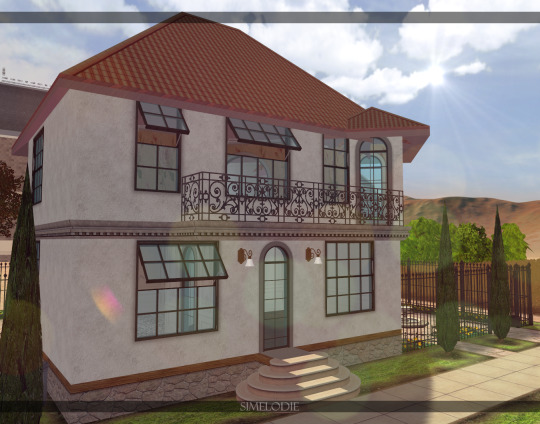


Hi Dears,
Not dead, just busy with life.
I’ve been feeling nostalgic lately and decided to recreate a very special house from my hometown which, sadly, has been demolished somewhere between 2012 - 2018 (judging by the maps photos). It was already in a very poor condition, its façade and balcony were a safety hazard to the pedestrians, so the authorities (or owner?) decided to get rid of it.
Though I’m not very certain about its architectural style and when it was built, I believe it’s somewhere around 1920′s and it’s probably a Romanian Revival style (Neo-Romanian), which has appeared in the late 19th century as a reaction to the Eclecticism - quite a few buildings in my hometown were made in the same style.
This specific house is one that I remember passing by when going to school and I also distinctly remember its withered wallpaper with pink roses, peeking through the closed balcony in the front.
Now, I have no clue how the interior or the back looked like, the location was out of bounds, but I did try to revive it as best as I could, and bring it back to its glory in game. :D
DOWNLOAD
As always, many thanks to the awesome creators whose content was used to create the house! <3
#sims 2 build#ts2build#ts2 build#ts2 lots#sims 2 lots#sims 2 download#ts2 download#sims 2 exterior#ts2outdoor#ts2 pictures#sims 2 pictures#sims 2 screenshots#ts2 screenshots#ts2cc#sims2cc#simspiration#Sims2#ts2
144 notes
·
View notes
Text
ngl roaming around bucharest on my trip told me that i really want to hc anica’s place in the cotroceni neighbourhood bc ooh baby brâncovenesc/romanian revival architecture is so beautiful it has unmistakable french and italian influences (a lot of ro’s most famous architects in this movement studied at the ecole des beaux-arts) but also some ottoman and byzantine and yet so, so romanian at the same time. that blend itself is so! aaaaa! and so much homage to the peasant and the priest; the foundations of romanian society. with the columns and wooden beams and the gazebo and the roof so high it almost doubles the height of the building (i’m being dramatic you get the point)
tl;dr, it’s what she deserves. the neighbourhood is also right by the modern location for the botanical gardens and come on. come on.
#i have a lovely photo from cotroceni. one mo.#another note: a lot of ivy. the houses are being eaten by ivy. i love it.#mâna autorului ✧ ooc
5 notes
·
View notes
Photo

Sarchal: The Forgotten History of Tehran’s Jewish Ghetto
By Kyle Newman

To reminisce is to remember with pleasure, to recollect past events while indulging in the enjoyment of nostalgic return. It would be too simplistic to say that the Jews of Iran reminisce blissfully about their past in a country with a fraught history of antisemitism, yet too harsh to conclude that the calamities they endured ought to completely overshadow their 2500 years of rich history. Memories of Sarchal, the Jewish ghetto of Tehran, serve as living manifestations of this ambivalent train of thought. A dynamic community that was forced to adapt to the ebb and flow of life under monarchical Shi’a regimes, Sarchal was much more than a physical location that housed Iran’s urban Jews from the dawn of the Safavid dynasty through to the troughs of a new Islamic Republic.

In 1588 CE, the Safavid Shah Abbas I revived the Persian empire after centuries of Mongol and Turkic governance. Fairly benign in policy during the first half of his rule, Shah Abbas I reversed his friendly attitude towards the Jewish population when a convert from the city of Lar impelled a royal edict that would force Jews to wear distinctive badges and headgear. Under this edict, Jews were now formally categorized as najjes (ritually impure) under the empire’s Shi’a theocratic law, and ghettoization would begin with the forced expulsion of Jews from Esfahan who refused to convert to Islam. Those who did convert were forced to practice Judaism secretly until 1661, when an edict would allow them to conditionally return to Judaism through payment of the jizya (a tax levied on religious minorities) and wearing their designated badge.

Conditions worsened for Jews during the Safavid era until one of the last kings of the dynasty, Nadir Shah, came to power in 1736 and abolished Shi’ism as the empire’s official religion. This action enabled Jews in cities like Mashhad, who had previously been subject to forced conversion, to reestablish and regrow their communities. Still, neither prosperity nor persecution were experienced by Jews in a linear fashion: the rise of the Qajar dynasty in 1794 spelled the onset of tightening oppression. The Romanian Jewish traveler and historian J.J. Benjamin wrote about the horrid conditions of Jewish life in Qajar Iran in an account from the mid-19th century:

“They are obliged to live in a separate part of town; for they are considered as unclean creatures… Under the pretext of their being unclean, they are treated with the greatest severity and should they enter a street, inhabited by Mussulmans, they are pelted by the boys and mobs with stones and dirt… For the same reason, they are prohibited to go out when it rains; for it is said the rain would wash dirt off them, which would sully the feet of the Mussulmans.”

Given the Jews’ status as a najjes group, the most straightforward way to limit physical contact between Muslims and Jews was to segregate them geographically. In Iranian cities with high Jewish populations like Esfahan, Kashan, Tehran, and Hamadan, Jews were segregated into designated neighborhoods, sometimes within the main city walls and sometimes outside of them. The internal layout of each mahaleh (ghetto) played an important role in distinguishing Jewish life in Iran from the history of other ethno-religious communities.

One such mahaleh was Sarchal, the Jewish quarter of Tehran. Sarchal was different from other Jewish ghettos in Iran given its location in the nation’s capital city of Tehran, an especially volatile and ever-transforming urban enclave since its founding by Qajar King Agha Mohammad Khan in 1786. Unlike the ghettos of Esfahan and other cities, Sarchal was located within Tehran’s old city walls. It is also unique in its oxymoronic overlap with a network of mosques and its proximity to a center of commerce, Tehran’s grand bazaar. Jews and Muslims in Tehran therefore must have interacted very frequently despite the Qajar regime’s heavy-handed, active efforts to quarantine and suppress Jewish life under their rule.

Sarchal is situated in the southeast corner of old Tehran, contemporarily known as the 12th district. It is directly west of Emamzadeh Yahya, or the birthplace of Imam Yahya, north of Tehran’s grand bazaar, east of Pamenar Bazaar, and south of the Qajar era Masoudieh palace (Map 1). I have also included below a map in Farsi created by Eshaq Shaoul that highlights landmarks, religious structures, and other important sites in the ghetto (Map 2). I have translated his map and included a key identifying the aforementioned sites in English (Map 3).







Map 3 Key:
1. Tamadon School
2. House of Seyed
3. Pamenar Gym (zoorkhaneh)
4. Midwife Zivar’s house
5. Mosque
6. Eshagh Bathhouse
7. Reza Goli Khan Mosque
8. Birthplace of Imam Yahya (Emamzadeh Yahya)
9. Mosque
10. Sepir Hospital
11. Midwife Sabia’s house
12. Mullah Haninah Synagogue
13. Aghajan Bakhshi’s house
14. Chaim Golabgir’s house
15. Ayatollah Behbahani’s house
16. Mosque
17. Ezra Mikhail Synagogue
18. Bookstore
19. Fereshteh Pharmacy
20. Seven Synagogue Alley
21. Eshagh’s second house
22. Sarchal Bathhouse
23. Sarchal Plaza
24. Mosque
25. Morteza Navi Butchershop
26. Hakim Moshiah Bathhouse
27. Hakim Synagogue
28. Torbati Pharmacy
29. Ezra Yaghoub Synagogue
30. Eshagh’s birthhouse
31. Dekhantal house
32. Dardashti’s house
33. Bakery
34. Yogurt Maker
35. Tekiyeh Mosque
36. Zoorkhaneh

Very few of Sarchal’s original structures remain intact today. The “Seven Synagogue Alley,” an alley literally surrounded by seven synagogues behind Sarchal’s main plaza, is now nowhere to be found. All the old Jewish hammams (bathhouses), which were built because Jews and Muslims were not allowed to use the same public baths, are gone, as are the Jewish butcher shops, bakeries, and zoorkhanehah (gymnasiums). The Ezra Yaghoub and Mullah Haninah synagogues are still standing, along with Sapir hospital, Pamenar Mosque (dating to the late Sasanian period), Abol Hassan Mosque, Haj Ali Khan Mosque, and Ayatollah Shah Abadi Mosque.

Street names were also changed following the Islamic Republic regime’s campaign to erase historical and cultural remnants of the Pahlavi era, often replacing them with the names of Shi’a religious and revolutionary martyrs. Cheragh Bargh Street is now Amir Kabir Street, Siroos (Cyrus) Street is now Mostafa Khomeini Street (commemorating Khomeini’s son who died before the 1979 revolution), while Pamenar Bazaar street endured little change and is now Pamenar street (Map 4).



Map 4 Key:
5. Ayatollah Shah Abadi Mosque
8. Birthplace of Imam Yahya (Emamzadeh Yahya)
10. Sepir Hospital
12. Mullah Haninah Synagogue
16. Abol Hassan Mosque
23. Sarchal Plaza
24. Pamenar Mosque
29. Ezra Yaghoub Synagogue

Sarchal originally included every necessity for Iranian Jews to conduct Jewish life in an incredibly small quarter with an area of less than one square mile. On an average day, one could stop by the bakery to pick up bread, visit the yogurt maker or butcher to prepare a meal, exercise at the zoorkhaneh, pray and study at one of nine synagogues, buy medication from either of two local pharmacies, and engage in scholarly life by buying a book from the bookstore. Reminders of a bygone era of Jewish life in the ghetto are echoed in prominent family names like Dardashti, Torbati, Elghanyan, and Hakim that originated in Sarchal, as well as the titles of surviving architectural spaces: “rag seller and tailor” alleyway, “welder’s bazaar,” and “cannonball storage facility.”

Slowly but surely, the massive discrimination of Iranian Jews that kept them ever close to one another in the confines of the mahaleh would reduce to subtlety after Reza Shah Pahlavi came to power in 1925. The official categorization of Jews and other religious minorities as najjes would be abolished, and the political power of the Shi’a clergy greatly weakened, ushering in a new zeitgeist marked by relative religious tolerance, which the Iranian Jewish historian Habib Levy would call “The Golden Age of Iranian Jewry.” Beginning in the 1940s and bleeding into the 1950s, the last remaining Jewish families of the mahalehs of many Iranian cities left their communities of origin for better jobs and assimilation in Northern Tehran. The Jewish communities of Iran-- and with them, Sarchal-- would eventually see their quasi-extinction after the 1979 Revolution, when the vast majority of Jews were compelled or forced to flee their home of 2500 years due to the new wave of institutionalized antisemitism established by the world’s first parliamentary theocracy, The Islamic Republic of Iran.

Whether you read The Proverbs of John Heywood from 1562 or listened to Snoop Dogg’s album “I Wanna Thank Me” from 2019, we are all well aware of the phrase “let bygones be bygones,” but to what degree does this sentiment merit acceptance in the context of Iranian sociopolitical history? As far as Jewish Iranians like me are concerned, forgetting the past can be detrimental to the continuation of our existence. There is a stigma surrounding the word Sarchal; many Persian Jews are reluctant to admit our history of poverty and ghettoization. But anything short of active remembrance would serve as a disrespectful gesture to the rag sellers, fabric dealers, grocers, midwives, homemakers, rabbis, butchers, dairymen, and tailors that made life in ghettoes like Sarchal sustainable and even vibrant, not to mention the Muslim business owners and civilians who continued to associate with Jewish communities despite institutional restrictions that prohibited them from doing so.

Jewish Iranians’ eventual outmigration from the mahalehs was surely a turning point that bolstered their financial success in later years and decades, but our escape from oppression should not negate our responsibility to honor our ancestors who built lives within its confines. In fact, we have much to learn from the Sarchalis who managed to raise families, provide for their community as a whole, and motivate Jewish life in less than one square mile-- with all the odds stacked against them.


References

Bentley, Jerry H, and Herbert F. Ziegler. Traditions & Encounters: A Global Perspective on the Past. New York: McGraw-Hill, 2011. Print.
Fischel, Walter J. “The Jews of Persia, 1795-1940.” Jewish Social Studies, vol. 12, no. 2, 1950, pp. 119–160. JSTOR, www.jstor.org/stable/4464868. Accessed 10 Jan. 2020.
Foltz, Richard (2015). Iran in World History. New York: Oxford University Press.
Levy, Habib (1999). Comprehensive History of the Jews of Iran. Costa Mesa, CA: Mazda Publishers.
Lewis, Bernard. The Jews of Islam: Updated Edition. REV - Revised ed., Princeton University Press, 1984. JSTOR, www.jstor.org/stable/j.ctt6wq0nq. Accessed 10 Jan. 2020.
Sanasarian, Eliz (2000). Religious Minorities in Iran. Cambridge: Cambridge University Press.
Shaoul, Eshagh. “Sarechal.com.... Come Home to the Place You Came From.” Welcome to Sarechal, Eshagh Shaoul, http://sarechal.com/.
Tsadik, Daniel. “JUDEO-PERSIAN COMMUNITIES v. QAJAR PERIOD (1).” Encyclopædia Iranica, XV/1, pp. 108-112 and XV/2, pp. 113-117, available online at http://www.iranicaonline.org/articles/judeo-persian-communities-v-qajar-period. Accessed 10 Jan. 2020.
Vladimir Minorsky. "The Turks, Iran and the Caucasus in the Middle Ages." Variorum Reprints, 1978.


Published on January 10th, 2020.
19 notes
·
View notes
Text

How a Romanian Roma boy hugged by Prince Charles won his heart.
Bucharest: It was a rare display of genuine Royal affection. On a tour of Romania on Friday, the Prince of Wales spotted the son of a close friend, wrapped his arms around him and gave him the biggest of hugs. Prince Charles beamed with joy. So too did the 11-year-old boy.
The child is Valentin Blacker, the son of an old Etonian and whose mother is a Romanian gypsy. William Blacker, 54, said his son, who lives in a remote village in Transylvania, is not put off by Royal protocol in the way that children brought up in the UK might be. Valentin is not inhibited by the formalities that a British boy in awe of the Royal family would have," said Mr Blacker, "Theirs is a very touching relationship".
The heir to the throne was on an official visit to Bucharest's Old Town, as part of a nine-day tour of Europe, when he spotted Valentin among the invited guests. It's not the first time he's hugged me," explained the youngster afterwards.
The Prince has known the schoolboy since he was a toddler and they frequently meet on the Prince's regular forays to Transylvania, where he has dedicated almost two decades to preserving its rich heritage and architecture.
"They get on very well," said Mr Blacker. "Valentin is a very effervescent child. He is very full of life and Charles thinks that's great. Charles finds it fascinating that he is half-gypsy. Charles always says to him 'When you are older you will have to take on all these jobs and look after all the old buildings'."
"Valentin is not shy or withdrawn and he talks to Prince Charles in a very natural way. It's very nice. He's not afraid of hugging Prince Charles and vice versa. Valentin thinks Prince Charles is absolutely marvellous and rather exotic. Both of them think each other rather exotic. They have this very fun, easy relationship."
Mr Blacker first "stumbled into" Romania in 1990 just after the fall of Nicolae Ceacescu's brutal, communist regime and began living with the local Roma.
He initially fell in love with one young gypsy woman but later embarked on a relationship with her sister. In 2006, the couple had Valentin - Mr Blacker's only child - although the unconventional relationship foundered after three years.
Mr Blacker subsequently wrote a best-selling and critically acclaimed book of his experiences - Along the Enchanted Way - in which he described falling "under the spell" of "Natalia" before moving in with her sister "Marishka", whose names he changed to protect their identities. In the book, Valentin is given the name Constantin.
Valentin has grown up in the village and now attends the local state secondary school in Sighisoara. Once a year for a month, he attends a Church of England school in the UK where his father lives part of the time. Valentin's schooling is a far cry from Eton where Mr Blacker was educated.
"Valentin is well travelled but when he's in Romania he is the same as all the other boys at school," said Mr Blacker. "He doesn't get any special treatment. He just mucks in. I have taught him all the important things, which are speaking English, playing tennis and swimming."
In 1996, Mr Blacker wrote a 20-page pamphlet, warning of the threat to Transylvania's architecture and heritage, especially its famous fortified churches. Prince Charles requested a copy and embarked on his own passionate campaign to preserve rural Transylvania.
It inspired the Prince to visit Romania for the first time in 1998 and since then he has bought a number of estates and houses and renovated them in keeping with local tradition.
Mr Blacker, who is chairman of the Anglo Romanian Trust for Traditional Architecture, has most recently worked to revive the tradition of making handmade terracotta tiles and in 2015 Prince Charles opened a new kiln. Valentin was in attendance at the event.
Prince Charles likes to make much of his family connections to Romania's most feared historical figure, Vlad the Impaler, said to be the inspiration for Bram Stoker's Dracula. The Prince is reckoned to be related to Vlad through his great-grandmother Queen Mary, the consort of George V.
He has joked that Romania is "in his blood" and at a reception this week, he told local dignitaries he "has a stake in Romania".
Telegraph, London
0 notes
Text
Jan 9: Jewish History in Timisoara
(Sorry for the long silence; my computer broke. I haven’t gotten the hang of adding in accents on this keyboard so I’m going to write words without their proper accents, as well).
Last month, the other Fulbrighters came to visit for our winter holiday meeting! It was great to see and hear from everyone and also so cool to get to learn new things about my own city on the tours I went on with them. I was especially glad to be able to go on a Jewish history tour of Timisoara and to see inside two beautiful synagogues, although one is in need of restoration.

Here’s a map of the old town of Timisoara. The town was originally a walled citadel, and you can see the Maria Teresa Bastion still standing on the eastern side (where the Muzeul National al Banatului is marked). The original Jewish quarter was a single one of these blocks -- it’s the one where the Locanda Del Corso is marked now, towards the NW corner of the city. The oldest synagogues were constructed to be protected in the inner courtyards of this block. There were multiple, as there were both Sephardic and Ashkenazi communities in the old Timisoara.
At that point, Timisoara was still Temesvar, a citadel of the Austro-Hungarian empire (the name of the bastion may have given that away). Today, much of the Jewish community in Transylvania still speaks Hungarian as their first language, so that’s one interesting cultural legacy you can see.
In the block just to the south of the Jewish quarter, you can see a silver roof. That’s the roof of Cetate Synagogue (Citadel Synagogue). This synagogue was built in the 1860s for the newly-formed Neolog community.
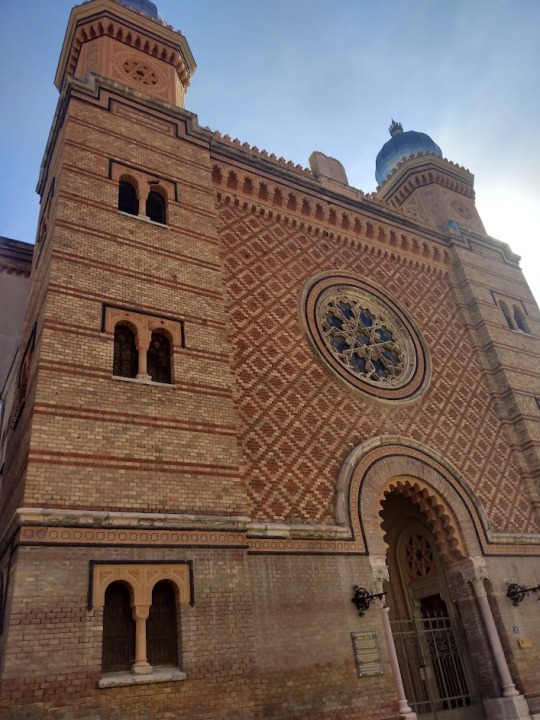
If you’ve been to Budapest before, you might notice a striking similarity to the Dohany Street Synagogue (which is the largest synagogue in Europe). For those of you who haven’t, don’t worry, I’ve just been to Budapest, so I have a picture for comparison.
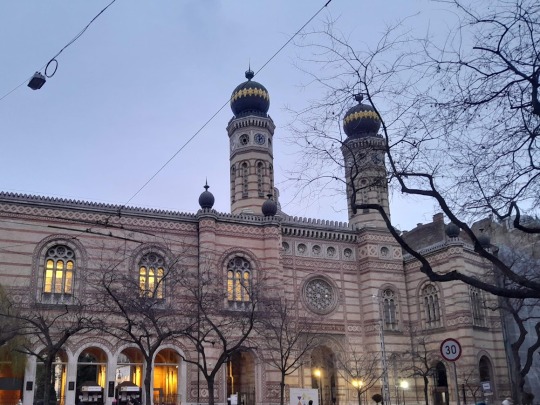
Both of these synagogues are Neolog synagogues built in the eclectic, Moorish revival style, and Timisoara’s was constructed just a few years later. You can see one of the "neo” aspects of this denomination in the interior -- although there is still a balcony for women to sit in, the railing does not fully shield them from view.
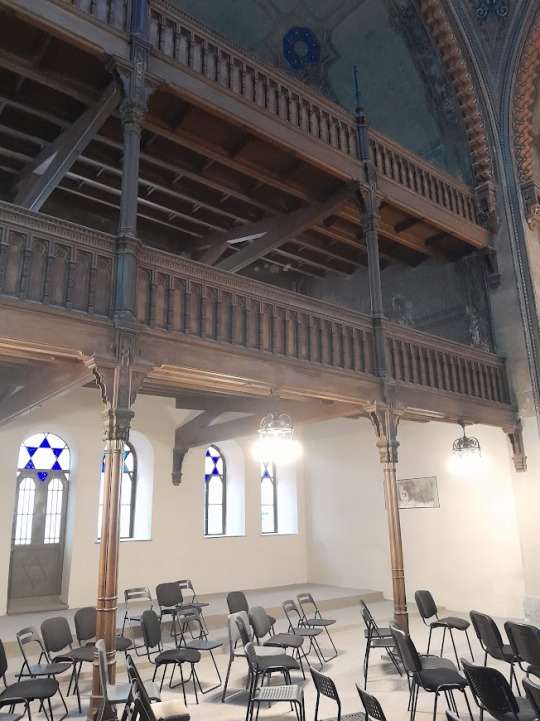
Cetate Synagogue has a capacity of 3000, which makes it larger than the today’s Jewish community in Timisoara is able to use. Because of this, it was ceded to the Philharmonic for 50 years as of 2001. Hopefully someday the community will be large enough again to use this synagogue.
There is another Neolog synagogue in Timisoara outside the city walls, in the Fabric district. Fabric means factory in Romanian, and that industrial presence is still felt today:
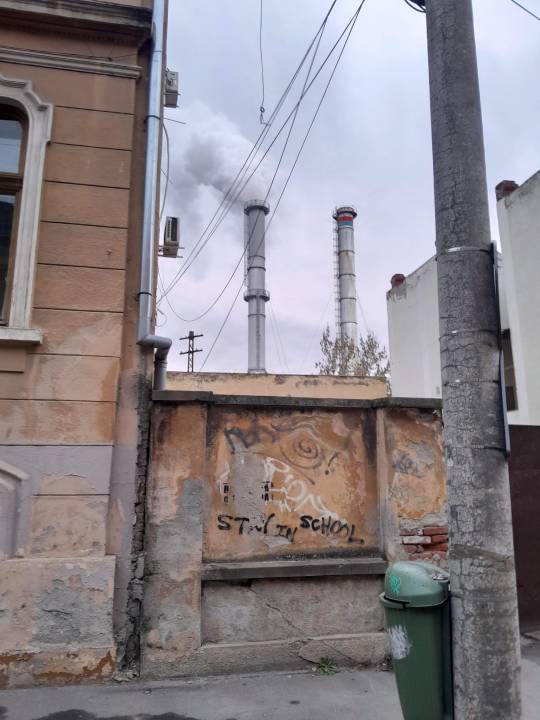
Sadly, however, this synagogue has not been maintained since it closed in 1985. The city hall has control of it now and the roof, at least, has been repaired to prevent any further damage to the structure. However, there are still not enough funds to complete restoration of the building. The eclectic architecture, combining Moorish elements with stained glass windows, is breathtaking. Because there is no lighting in the building, the pictures I took cannot do it justice.


Here’s a picture from Wikipedia of the synagogue when it was only a few years old, in 1905.

It’s hard to see a visual representation of how large and vibrant Timisoara’s Jewish community was at the start of the 20th century, and to feel that absence in the decay of this synagogue.
0 notes
Photo

National Revival period
During Ottoman domination and particularly during the National Revival period, the town was active in the struggles of the Bulgarian people. In 1840 the first secular girl’s school was opened, and in 1869 Vassil Levski founded the first local revolutionary committee. The Church of St Nicholas, built in
1834 is a remarkable monument to the architecture of the National Revival,, directly linked with the struggle for independence of the church, Pleven became particularly prominent during the Russo-Turkish War of Liberation of 1877-1878 which terminated Ottoman bondage. Russian and Romanian troops besieged the town over more than five months and liberated it on December 10,1877. They captured the entire Turkish army and its commander Osman Pasha.
Under the monarchy the town was the centre of revolutionary movement. During the Second World War (1941-1944) the town had five detachments comprising over 550 partisans.
LOVETSCH
Pleven today is a large-scale industrial centre and has 6 research institutes, a large district library school, technical colleges, secondary7 music school, college, theatre, symphony orchestra and an opera. The traditional Katya Popova Laureate Days are held in Pleven every year.
Sights in the city and its surroundings
Over 100 monuments were built by the Bulgarian people for the Russian soldiers who liberated Bulgaria. Most prominent being the Mausoleum of the Russian and Romanian Troops, in the main square sofia daily tours, 9th September Square;Pleven Liberation Museum (1877) situated in a picturesque park, was opened in 1907 in the same house where Osman Pasha delivered up his sword to the Russian Emperor Alexander II. Other monuments include the Totleben Rampart, in Kailuka park, separating the waters of two dams. The walls of small dam is on the remains of a dam built by General Totleben in 1877, meant to put the mills on the Touchenitsa river out of action and cause difficulties for the Turkish army besieged in Pleven. One of the original guns has been placed on the ramparts with a bronze figure of General Totleben beside it. The Skobelev park Museum is a large park where in 1877 a detach-ment led by General Skobelev waged heroic battles.
There are ruins of an ancient Roman Fortress, Storgozia (l-6th century’ in the Kailuka locality.
The District History Museum is in the old barracks built in 1884-1888 by an Italian architect and since restored. The museum exhibits are mainly arranged chronologically — antiquity, National Revival, Russo-Turkish War of Liberation 1877-1878, history of capitalism, workers’ revolutionary movement and socialist construction.
0 notes
Photo
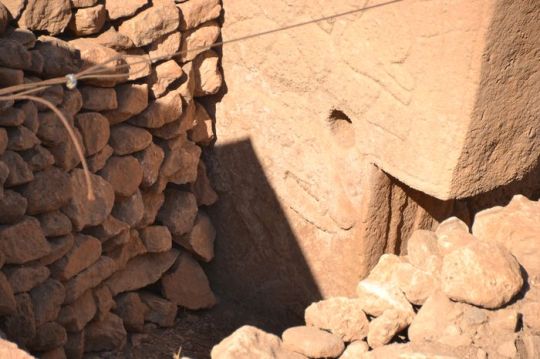
National Revival period
During Ottoman domination and particularly during the National Revival period, the town was active in the struggles of the Bulgarian people. In 1840 the first secular girl’s school was opened, and in 1869 Vassil Levski founded the first local revolutionary committee. The Church of St Nicholas, built in
1834 is a remarkable monument to the architecture of the National Revival,, directly linked with the struggle for independence of the church, Pleven became particularly prominent during the Russo-Turkish War of Liberation of 1877-1878 which terminated Ottoman bondage. Russian and Romanian troops besieged the town over more than five months and liberated it on December 10,1877. They captured the entire Turkish army and its commander Osman Pasha.
Under the monarchy the town was the centre of revolutionary movement. During the Second World War (1941-1944) the town had five detachments comprising over 550 partisans.
LOVETSCH
Pleven today is a large-scale industrial centre and has 6 research institutes, a large district library school, technical colleges, secondary7 music school, college, theatre, symphony orchestra and an opera. The traditional Katya Popova Laureate Days are held in Pleven every year.
Sights in the city and its surroundings
Over 100 monuments were built by the Bulgarian people for the Russian soldiers who liberated Bulgaria. Most prominent being the Mausoleum of the Russian and Romanian Troops, in the main square sofia daily tours, 9th September Square;Pleven Liberation Museum (1877) situated in a picturesque park, was opened in 1907 in the same house where Osman Pasha delivered up his sword to the Russian Emperor Alexander II. Other monuments include the Totleben Rampart, in Kailuka park, separating the waters of two dams. The walls of small dam is on the remains of a dam built by General Totleben in 1877, meant to put the mills on the Touchenitsa river out of action and cause difficulties for the Turkish army besieged in Pleven. One of the original guns has been placed on the ramparts with a bronze figure of General Totleben beside it. The Skobelev park Museum is a large park where in 1877 a detach-ment led by General Skobelev waged heroic battles.
There are ruins of an ancient Roman Fortress, Storgozia (l-6th century’ in the Kailuka locality.
The District History Museum is in the old barracks built in 1884-1888 by an Italian architect and since restored. The museum exhibits are mainly arranged chronologically — antiquity, National Revival, Russo-Turkish War of Liberation 1877-1878, history of capitalism, workers’ revolutionary movement and socialist construction.
0 notes
Photo

National Revival period
During Ottoman domination and particularly during the National Revival period, the town was active in the struggles of the Bulgarian people. In 1840 the first secular girl’s school was opened, and in 1869 Vassil Levski founded the first local revolutionary committee. The Church of St Nicholas, built in
1834 is a remarkable monument to the architecture of the National Revival,, directly linked with the struggle for independence of the church, Pleven became particularly prominent during the Russo-Turkish War of Liberation of 1877-1878 which terminated Ottoman bondage. Russian and Romanian troops besieged the town over more than five months and liberated it on December 10,1877. They captured the entire Turkish army and its commander Osman Pasha.
Under the monarchy the town was the centre of revolutionary movement. During the Second World War (1941-1944) the town had five detachments comprising over 550 partisans.
LOVETSCH
Pleven today is a large-scale industrial centre and has 6 research institutes, a large district library school, technical colleges, secondary7 music school, college, theatre, symphony orchestra and an opera. The traditional Katya Popova Laureate Days are held in Pleven every year.
Sights in the city and its surroundings
Over 100 monuments were built by the Bulgarian people for the Russian soldiers who liberated Bulgaria. Most prominent being the Mausoleum of the Russian and Romanian Troops, in the main square sofia daily tours, 9th September Square;Pleven Liberation Museum (1877) situated in a picturesque park, was opened in 1907 in the same house where Osman Pasha delivered up his sword to the Russian Emperor Alexander II. Other monuments include the Totleben Rampart, in Kailuka park, separating the waters of two dams. The walls of small dam is on the remains of a dam built by General Totleben in 1877, meant to put the mills on the Touchenitsa river out of action and cause difficulties for the Turkish army besieged in Pleven. One of the original guns has been placed on the ramparts with a bronze figure of General Totleben beside it. The Skobelev park Museum is a large park where in 1877 a detach-ment led by General Skobelev waged heroic battles.
There are ruins of an ancient Roman Fortress, Storgozia (l-6th century’ in the Kailuka locality.
The District History Museum is in the old barracks built in 1884-1888 by an Italian architect and since restored. The museum exhibits are mainly arranged chronologically — antiquity, National Revival, Russo-Turkish War of Liberation 1877-1878, history of capitalism, workers’ revolutionary movement and socialist construction.
0 notes
Photo

National Revival period
During Ottoman domination and particularly during the National Revival period, the town was active in the struggles of the Bulgarian people. In 1840 the first secular girl’s school was opened, and in 1869 Vassil Levski founded the first local revolutionary committee. The Church of St Nicholas, built in
1834 is a remarkable monument to the architecture of the National Revival,, directly linked with the struggle for independence of the church, Pleven became particularly prominent during the Russo-Turkish War of Liberation of 1877-1878 which terminated Ottoman bondage. Russian and Romanian troops besieged the town over more than five months and liberated it on December 10,1877. They captured the entire Turkish army and its commander Osman Pasha.
Under the monarchy the town was the centre of revolutionary movement. During the Second World War (1941-1944) the town had five detachments comprising over 550 partisans.
LOVETSCH
Pleven today is a large-scale industrial centre and has 6 research institutes, a large district library school, technical colleges, secondary7 music school, college, theatre, symphony orchestra and an opera. The traditional Katya Popova Laureate Days are held in Pleven every year.
Sights in the city and its surroundings
Over 100 monuments were built by the Bulgarian people for the Russian soldiers who liberated Bulgaria. Most prominent being the Mausoleum of the Russian and Romanian Troops, in the main square sofia daily tours, 9th September Square;Pleven Liberation Museum (1877) situated in a picturesque park, was opened in 1907 in the same house where Osman Pasha delivered up his sword to the Russian Emperor Alexander II. Other monuments include the Totleben Rampart, in Kailuka park, separating the waters of two dams. The walls of small dam is on the remains of a dam built by General Totleben in 1877, meant to put the mills on the Touchenitsa river out of action and cause difficulties for the Turkish army besieged in Pleven. One of the original guns has been placed on the ramparts with a bronze figure of General Totleben beside it. The Skobelev park Museum is a large park where in 1877 a detach-ment led by General Skobelev waged heroic battles.
There are ruins of an ancient Roman Fortress, Storgozia (l-6th century’ in the Kailuka locality.
The District History Museum is in the old barracks built in 1884-1888 by an Italian architect and since restored. The museum exhibits are mainly arranged chronologically — antiquity, National Revival, Russo-Turkish War of Liberation 1877-1878, history of capitalism, workers’ revolutionary movement and socialist construction.
0 notes
Photo

National Revival period
During Ottoman domination and particularly during the National Revival period, the town was active in the struggles of the Bulgarian people. In 1840 the first secular girl’s school was opened, and in 1869 Vassil Levski founded the first local revolutionary committee. The Church of St Nicholas, built in
1834 is a remarkable monument to the architecture of the National Revival,, directly linked with the struggle for independence of the church, Pleven became particularly prominent during the Russo-Turkish War of Liberation of 1877-1878 which terminated Ottoman bondage. Russian and Romanian troops besieged the town over more than five months and liberated it on December 10,1877. They captured the entire Turkish army and its commander Osman Pasha.
Under the monarchy the town was the centre of revolutionary movement. During the Second World War (1941-1944) the town had five detachments comprising over 550 partisans.
LOVETSCH
Pleven today is a large-scale industrial centre and has 6 research institutes, a large district library school, technical colleges, secondary7 music school, college, theatre, symphony orchestra and an opera. The traditional Katya Popova Laureate Days are held in Pleven every year.
Sights in the city and its surroundings
Over 100 monuments were built by the Bulgarian people for the Russian soldiers who liberated Bulgaria. Most prominent being the Mausoleum of the Russian and Romanian Troops, in the main square sofia daily tours, 9th September Square;Pleven Liberation Museum (1877) situated in a picturesque park, was opened in 1907 in the same house where Osman Pasha delivered up his sword to the Russian Emperor Alexander II. Other monuments include the Totleben Rampart, in Kailuka park, separating the waters of two dams. The walls of small dam is on the remains of a dam built by General Totleben in 1877, meant to put the mills on the Touchenitsa river out of action and cause difficulties for the Turkish army besieged in Pleven. One of the original guns has been placed on the ramparts with a bronze figure of General Totleben beside it. The Skobelev park Museum is a large park where in 1877 a detach-ment led by General Skobelev waged heroic battles.
There are ruins of an ancient Roman Fortress, Storgozia (l-6th century’ in the Kailuka locality.
The District History Museum is in the old barracks built in 1884-1888 by an Italian architect and since restored. The museum exhibits are mainly arranged chronologically — antiquity, National Revival, Russo-Turkish War of Liberation 1877-1878, history of capitalism, workers’ revolutionary movement and socialist construction.
0 notes
Photo

National Revival period
During Ottoman domination and particularly during the National Revival period, the town was active in the struggles of the Bulgarian people. In 1840 the first secular girl’s school was opened, and in 1869 Vassil Levski founded the first local revolutionary committee. The Church of St Nicholas, built in
1834 is a remarkable monument to the architecture of the National Revival,, directly linked with the struggle for independence of the church, Pleven became particularly prominent during the Russo-Turkish War of Liberation of 1877-1878 which terminated Ottoman bondage. Russian and Romanian troops besieged the town over more than five months and liberated it on December 10,1877. They captured the entire Turkish army and its commander Osman Pasha.
Under the monarchy the town was the centre of revolutionary movement. During the Second World War (1941-1944) the town had five detachments comprising over 550 partisans.
LOVETSCH
Pleven today is a large-scale industrial centre and has 6 research institutes, a large district library school, technical colleges, secondary7 music school, college, theatre, symphony orchestra and an opera. The traditional Katya Popova Laureate Days are held in Pleven every year.
Sights in the city and its surroundings
Over 100 monuments were built by the Bulgarian people for the Russian soldiers who liberated Bulgaria. Most prominent being the Mausoleum of the Russian and Romanian Troops, in the main square sofia daily tours, 9th September Square;Pleven Liberation Museum (1877) situated in a picturesque park, was opened in 1907 in the same house where Osman Pasha delivered up his sword to the Russian Emperor Alexander II. Other monuments include the Totleben Rampart, in Kailuka park, separating the waters of two dams. The walls of small dam is on the remains of a dam built by General Totleben in 1877, meant to put the mills on the Touchenitsa river out of action and cause difficulties for the Turkish army besieged in Pleven. One of the original guns has been placed on the ramparts with a bronze figure of General Totleben beside it. The Skobelev park Museum is a large park where in 1877 a detach-ment led by General Skobelev waged heroic battles.
There are ruins of an ancient Roman Fortress, Storgozia (l-6th century’ in the Kailuka locality.
The District History Museum is in the old barracks built in 1884-1888 by an Italian architect and since restored. The museum exhibits are mainly arranged chronologically — antiquity, National Revival, Russo-Turkish War of Liberation 1877-1878, history of capitalism, workers’ revolutionary movement and socialist construction.
0 notes
Photo

National Revival period
During Ottoman domination and particularly during the National Revival period, the town was active in the struggles of the Bulgarian people. In 1840 the first secular girl’s school was opened, and in 1869 Vassil Levski founded the first local revolutionary committee. The Church of St Nicholas, built in
1834 is a remarkable monument to the architecture of the National Revival,, directly linked with the struggle for independence of the church, Pleven became particularly prominent during the Russo-Turkish War of Liberation of 1877-1878 which terminated Ottoman bondage. Russian and Romanian troops besieged the town over more than five months and liberated it on December 10,1877. They captured the entire Turkish army and its commander Osman Pasha.
Under the monarchy the town was the centre of revolutionary movement. During the Second World War (1941-1944) the town had five detachments comprising over 550 partisans.
LOVETSCH
Pleven today is a large-scale industrial centre and has 6 research institutes, a large district library school, technical colleges, secondary7 music school, college, theatre, symphony orchestra and an opera. The traditional Katya Popova Laureate Days are held in Pleven every year.
Sights in the city and its surroundings
Over 100 monuments were built by the Bulgarian people for the Russian soldiers who liberated Bulgaria. Most prominent being the Mausoleum of the Russian and Romanian Troops, in the main square sofia daily tours, 9th September Square;Pleven Liberation Museum (1877) situated in a picturesque park, was opened in 1907 in the same house where Osman Pasha delivered up his sword to the Russian Emperor Alexander II. Other monuments include the Totleben Rampart, in Kailuka park, separating the waters of two dams. The walls of small dam is on the remains of a dam built by General Totleben in 1877, meant to put the mills on the Touchenitsa river out of action and cause difficulties for the Turkish army besieged in Pleven. One of the original guns has been placed on the ramparts with a bronze figure of General Totleben beside it. The Skobelev park Museum is a large park where in 1877 a detach-ment led by General Skobelev waged heroic battles.
There are ruins of an ancient Roman Fortress, Storgozia (l-6th century’ in the Kailuka locality.
The District History Museum is in the old barracks built in 1884-1888 by an Italian architect and since restored. The museum exhibits are mainly arranged chronologically — antiquity, National Revival, Russo-Turkish War of Liberation 1877-1878, history of capitalism, workers’ revolutionary movement and socialist construction.
0 notes
Photo

National Revival period
During Ottoman domination and particularly during the National Revival period, the town was active in the struggles of the Bulgarian people. In 1840 the first secular girl’s school was opened, and in 1869 Vassil Levski founded the first local revolutionary committee. The Church of St Nicholas, built in
1834 is a remarkable monument to the architecture of the National Revival,, directly linked with the struggle for independence of the church, Pleven became particularly prominent during the Russo-Turkish War of Liberation of 1877-1878 which terminated Ottoman bondage. Russian and Romanian troops besieged the town over more than five months and liberated it on December 10,1877. They captured the entire Turkish army and its commander Osman Pasha.
Under the monarchy the town was the centre of revolutionary movement. During the Second World War (1941-1944) the town had five detachments comprising over 550 partisans.
LOVETSCH
Pleven today is a large-scale industrial centre and has 6 research institutes, a large district library school, technical colleges, secondary7 music school, college, theatre, symphony orchestra and an opera. The traditional Katya Popova Laureate Days are held in Pleven every year.
Sights in the city and its surroundings
Over 100 monuments were built by the Bulgarian people for the Russian soldiers who liberated Bulgaria. Most prominent being the Mausoleum of the Russian and Romanian Troops, in the main square sofia daily tours, 9th September Square;Pleven Liberation Museum (1877) situated in a picturesque park, was opened in 1907 in the same house where Osman Pasha delivered up his sword to the Russian Emperor Alexander II. Other monuments include the Totleben Rampart, in Kailuka park, separating the waters of two dams. The walls of small dam is on the remains of a dam built by General Totleben in 1877, meant to put the mills on the Touchenitsa river out of action and cause difficulties for the Turkish army besieged in Pleven. One of the original guns has been placed on the ramparts with a bronze figure of General Totleben beside it. The Skobelev park Museum is a large park where in 1877 a detach-ment led by General Skobelev waged heroic battles.
There are ruins of an ancient Roman Fortress, Storgozia (l-6th century’ in the Kailuka locality.
The District History Museum is in the old barracks built in 1884-1888 by an Italian architect and since restored. The museum exhibits are mainly arranged chronologically — antiquity, National Revival, Russo-Turkish War of Liberation 1877-1878, history of capitalism, workers’ revolutionary movement and socialist construction.
0 notes